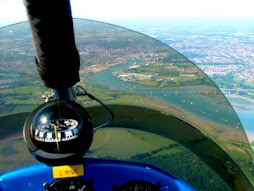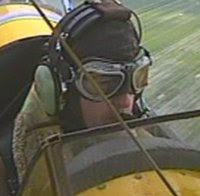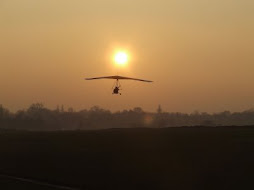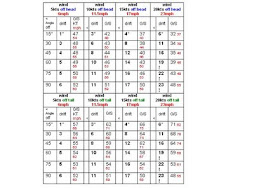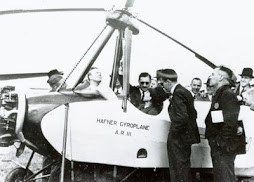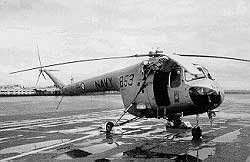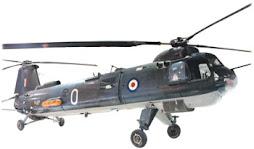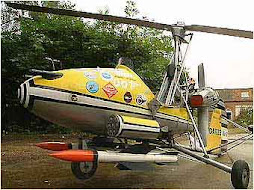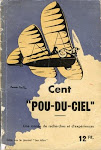

 Yesterday I flew a de Havilland Chipmunk, the type Dad flew with Bristol University Air Squadron in the late 1950s. It is a type I have always wanted to ride in, let alone pilot!
Yesterday I flew a de Havilland Chipmunk, the type Dad flew with Bristol University Air Squadron in the late 1950s. It is a type I have always wanted to ride in, let alone pilot! I darted around Flylight, desperate to find anyone who could lend me twenty quid, then saw my instructor landing and approached him as he taxyed in and switched off. Neill was very kind and reached for his wallet even before I explained that a young woman was taking me up in her Chipmunk. He has been banging on about it ever since, to anyone who will listen; using his bloody money to help me go swanning off with a woman! He was far more interested in the woman angle than the Chipmunk one.
I darted around Flylight, desperate to find anyone who could lend me twenty quid, then saw my instructor landing and approached him as he taxyed in and switched off. Neill was very kind and reached for his wallet even before I explained that a young woman was taking me up in her Chipmunk. He has been banging on about it ever since, to anyone who will listen; using his bloody money to help me go swanning off with a woman! He was far more interested in the woman angle than the Chipmunk one.  Flying the Chipmunk changed my view of 3-axis altogether - you will remember how bored I was in a Eurostar. Carol would tell you that I was all over the place ("nose too high", "level the wings", "more power, more power", etc), but the fact is that I was actually flying the thing for twenty minutes...and I was delighted to see how easily transferable my skills are....and indeed that I had no problem with the reversing of the controls; it was instinctive (or maybe I have just been doing it all my life in my imagination? - reading, -war films etc). I understood the instruments, the principles of flight, the trim, etc, etc.
Flying the Chipmunk changed my view of 3-axis altogether - you will remember how bored I was in a Eurostar. Carol would tell you that I was all over the place ("nose too high", "level the wings", "more power, more power", etc), but the fact is that I was actually flying the thing for twenty minutes...and I was delighted to see how easily transferable my skills are....and indeed that I had no problem with the reversing of the controls; it was instinctive (or maybe I have just been doing it all my life in my imagination? - reading, -war films etc). I understood the instruments, the principles of flight, the trim, etc, etc.Carol took over at one point to show me some pretty dramatic turns where we pulled 2G! It is a terrifically stable and forgiving aeroplane and, honestly, I think it is easier than a few flight sims I have tried. I do think that one day I will have to do a GA conversion, or at very least that I will have to do 3-axis on microlights and get something quirky - not yer bog-standard Cessna-wannabe, like the SkyRanger.
 Before take off, Carol gave me a very professional pre-flight patter, which made me ask if she was actually an instructor. Until then I had only been aware that she was a member of a syndicate that owned the aeroplane. She had simply said that she'd be delighted to take me up. I'd thought I was getting a "jolly", never imagining that I'd get my hands on the controls. It turned out that she has just qualified and that I was to be, in effect, her first student. Heck of a privilege!
Before take off, Carol gave me a very professional pre-flight patter, which made me ask if she was actually an instructor. Until then I had only been aware that she was a member of a syndicate that owned the aeroplane. She had simply said that she'd be delighted to take me up. I'd thought I was getting a "jolly", never imagining that I'd get my hands on the controls. It turned out that she has just qualified and that I was to be, in effect, her first student. Heck of a privilege! So, I now have 20 minutes of logged tailwheel experience in a late forties airforce trainer. When she sent me to get my logbook, as she paid for fuel and prepped for take-off with another Chipmunk heading home with her, I am sure I must have looked like an excited schoolboy.
 This was a fantastic experience on so many levels. For one thing there is the link to my Dad, but apart from anything else it is probably as close as I will get to flying in a Spitfire.
This was a fantastic experience on so many levels. For one thing there is the link to my Dad, but apart from anything else it is probably as close as I will get to flying in a Spitfire.
Thank you so much, Carol.
Sadly, Carol's research showed that Dad never could have sat in this particular Chipmunk. It served with numerous University squadrons, but never Bristol's.
.




.JPG)
.JPG)
.JPG)









